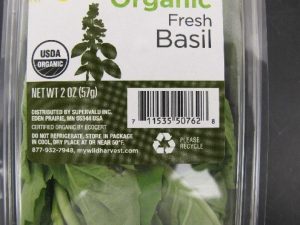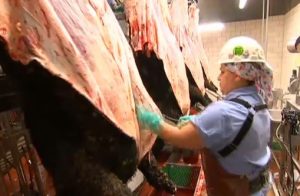I keep telling people that certain fresh herbs – like basil – are a ridiculously high percentage of foodborne illnesses.
 They look at me like I just fell off the truck.
They look at me like I just fell off the truck.
Sure, I walk with a cane now because I fall too much, but not off trucks.
United Natural Foods, Inc. (UNFI) is initiating a voluntary recall of a limited quantity of Wild Harvest® Organic Basil distributed out of UNFI’s Hopkins, MN distribution center to select retailers in Minnesota between 4/18/2020-5/8/2020. UNFI’s recall is issued out of an abundance of caution because of the potential for the impacted product to be contaminated by Cyclospora cayetanensis. No illnesses, including allergic reactions, involving this product have been reported to date.
This recall includes Wild Harvest® Organic Fresh Basil products sold in .25oz, .75oz, 2oz, and 4oz plastic clam shell containers (UPCs: 0071153550450, 0071153550322, 0071153550762, 0071153550323). Impacted product can be identified by a white sticker with black ink on the back of the container stating: “Product of Colombia” and “112.”
This concern was identified following routine sampling. Cyclospora cayetanensis is a microscopic parasite that can cause an intestinal illness in people called cyclosporiasis. According to the U.S. Centers for Disease Control and Prevention, the illness is usually not life threatening. Symptoms of cyclosporiasis may include: watery diarrhea (most common), loss of appetite, weight loss, cramping, bloating, increased gas, nausea and fatigue. Other symptoms that may occur but are less common include vomiting and low-grade fever.







